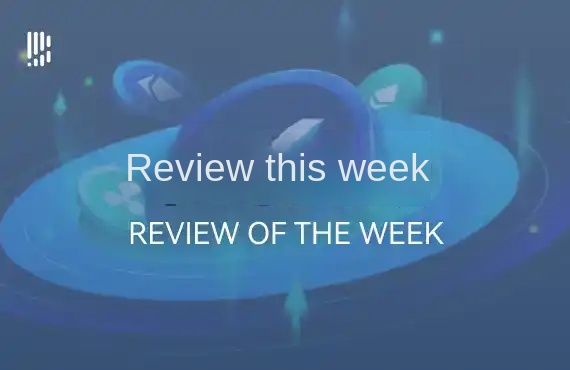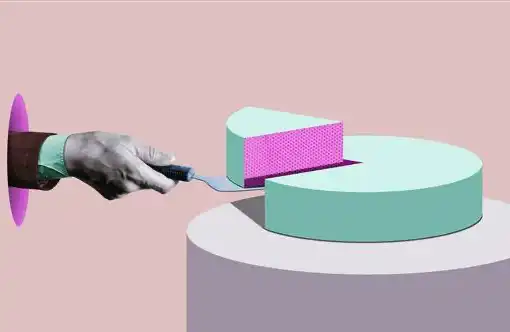Can an inscription disappear? How much power do Bitcoin Core developers really have?
Author: Jaleel, Kaori, BlockBeats
Editor: Zhang Wen, BlockBeats
On December 6th, Bitcoin Core developer Luke Dashjr posted on social media that "Mingwen" is using a vulnerability in the Bitcoin Core client to send spam messages to the blockchain. Since 2013, Bitcoin Core has allowed users to set an additional data size limit when forwarding or mining transactions. By blurring its data as program code, Mingwen bypassed this limit.
In short, this experienced Bitcoin client developer believes that the Inscription track represented by ORDI, which has entered the top 50 by market value, is a bug that can be fixed.

Luke Dashjr said that "this vulnerability was recently fixed in Bitcoin Knots v25.1. Due to serious disruptions to my workflow at the end of last year (v24 was completely skipped), the fix took longer than usual. The vulnerability still exists in Bitcoin Core in the upcoming v26 release. I can only hope that it will be finally fixed before v27 next year."
Luke Dashjr explicitly stated in the comments below the tweet that if this bug is fixed, Ordinals script and BRC20 tokens will no longer exist.
As a Bitcoin OG, Luke Dashjr has always been a vocal critic of the Ordinals protocol. In February of this year, Dashjr tweeted that "the Ordinals protocol is an attack on Bitcoin." In May, when the first wave of NFT craze emerged, Dashjr and Bitcoin Core's opposition were also seen as uncertain factors in the development of NFTs.
However, the previous quarrel did not trigger a widespread discussion, after all, Ordinals is still a product biased by the market. But now ORDI, which has increased by 20,000 times, has become a national meme. With just one sentence from Luke Dashjr, the market value of ORDI evaporated by 300 million US dollars in a few minutes.
The reason why the market is afraid is very clear: Does the Bitcoin core team really have the power to change the code at will?
Luke Dashjr: Early developer who joined in 2011
Does Luke Dashjr have the qualifications to evaluate Bitcoin? Absolutely. Luke Dashjr encountered Bitcoin in 2011 and soon joined the project as a developer. His programming knowledge quickly made him a key Bitcoin developer, helping to build the early infrastructure. His early contributions to Bitcoin software focused primarily on troubleshooting security, performance, and advanced features of Bitcoin Core.
Sorted by number of commits, as of now, Luke Dashjr ranks 14th in the Bitcoin Core code contributor ranking.

As an early developer who joined the industry, Luke Dashjr has been involved in almost all important events in the early days of Bitcoin.
Due to software errors in Bitcoin Core, Dashjr was one of the earliest people to discover a hard fork in Bitcoin in 2013. In 2014, Dashjr began to play a greater role in the Bitcoin ecosystem, as the modified version of BFG Miner he used allowed miners to work with higher performance than other miners at the time.
In 2016, Dashjr introduced BIP-2, a significant improvement to the BIP format proposed by another Bitcoin developer and renowned cryptographer, Amir Taaki. During 2016 and 2017, Dashjr was also a key participant in activating Segwit in Bitcoin. Other contributions made by Dashjr to the development of Bitcoin include BIP-22 and BIP-23, which aim to optimize block generation structure and improve efficiency within mining pools.
Returning to the previous discussion, Luke Dashjr mentioned that "this vulnerability was recently fixed in Bitcoin Knots v25.1, and hopefully will be finally fixed before v27 next year." Bitcoin Knots is a complete Bitcoin client, and the original idea also came from Luke Dashjr.
Luke Dashjr is still a network security extremist. In fact, he believes that Bitcoin has security vulnerabilities in its current network state because its network is not fully decentralized. For this reason, he invites everyone who uses Bitcoin to install their own full node.
Why don't you like Ordinals?
Luke Dashjr's aversion to Ordinals stems from his steadfast belief in preserving Bitcoin's original ideology.
In late 2022, software engineer Casey Rodarmor created the "Ordinals" protocol, which numbered the smallest unit of Bitcoin, "satoshi", and stored file metadata through Taproot to create a unique NFT. On March 8th, an anonymous developer named @domo released the BRC-20 protocol based on the Ordinals protocol, which created a replaceable token standard. This sparked the craze for inscriptions this year and led to a huge explosion in the Bitcoin ecosystem.
On February 1st, Bitcoin mining company Luxor announced that it had mined the largest Bitcoin block in history, with a size of 3.96MB, slightly below Bitcoin's 4MB limit. The block contained a NFT based on the original "magic internet money" meme, called Taproot Wizards.
Dashjr and other Bitcoin ecosystem developers believe that this will cause the Bitcoin blockchain size to rapidly expand, requiring a significant increase in the requirements for devices running full nodes, leading to a decrease in the number of full nodes on the network and a decrease in censorship resistance. At the same time, unexpectedly large transactions and blocks will impact the ecosystem facilities such as wallets, mining pools, and browsers, causing some facilities to malfunction, such as certain transactions failing to be parsed. In addition, mining pools or miners may choose to mine without downloading or verifying such transactions and blocks in order to reduce synchronization and verification time, which brings security risks.
They even harshly criticized the Taproot Wizard's behavior, stating: "This is an attack on Bitcoin. Bitcoin blocks have a 1MB limit, and the Taproot Wizard's 4MB data is put on the chain through the witness, bypassing the 1MB limit on blocks and transactions. From this perspective, this is not innovation, but an attack on vulnerabilities!"
On February 28th of this year, Luke Dashjr stated on social media that an auction website had created and sold "misleading" NFTs using his name and code without his consent. A screenshot shows that the NFT contains an image of code he wrote and was sold on the auction website for 0.41 bitcoins.
I did not participate in the creation and sale of this or any other NFT, and I do not agree to have my code or my name used for this purpose," Luke Dashjr clarified on Twitter in response to worsening criticism. "Due to false statements and confusion of actual buyers involved, I strongly demand that 100% of the auction proceeds be refunded to the buyers.
It can be seen that Luke Dashjr is a developer with almost obsessive high requirements for the healthy ecology of Bitcoin. Dashjr believes that Ordinals are not just spam that clogs the network, but also an attack on the fungibility of Bitcoin. Accepting their existence will destroy the Lightning Network and CoinJoin.

And this is also the result that maximalists of Bitcoin cannot accept. In May, Luke Dashjr wrote on his Github account that he was very annoyed by the hype of BRC-20 and meme coins, "Immediate corrective action is needed to address Ordinals, and these measures should have been provided long ago."
 Luke Dashjr GitHub interface; image source: community.
Luke Dashjr GitHub interface; image source: community.
In emails sent to other Bitcoin developers and miners, Dashjr proposed integrating a "spam filter" mechanism into Taproot transactions to prevent the spread of Ordinals and BRC-20 tokens in the Bitcoin network. He stated that "action should have been taken months ago. Spam filtering has always been a standard part of Bitcoin Core. It was a mistake that existing filters were not extended to Taproot transactions, as this is a bug fix that does not actually require waiting for a major release."

7. Deployment and Activation: Finally, the new code needs to be deployed to the systems of miners and node operators. For protocol-level changes, there is usually an activation threshold, and the improvement will only take effect when enough network participants upgrade to the new version.
From the perspective of the past block size wars, there is no single individual or entity that can directly confirm and decide whether a BIP has reached consensus or can be merged into the codebase. Instead, this is a process that is jointly participated in by the Bitcoin community, which includes collaboration and consensus from multiple key groups in addition to developers and reviewers.
Especially for miners, their support is crucial for BIP proposals that involve protocol changes. Miners express their support for BIP by including specific signals in the blocks they mine. If a proposal is not supported by a certain threshold of miners, it is usually not considered to have reached consensus.
Node operator: Full node operators also play an important role in the consensus formation process. They express their support by upgrading to software versions that support the new BIP. The increase in the number of nodes indicates the widespread acceptance of the proposal by the community.
Users and community members: Although Bitcoin users and community members do not directly participate in the decision-making process of code merging, their opinions and discussions are crucial in forming consensus. They can express their opinions through community forums, mailing lists, and social media platforms.
Bitcoin returns to the moment of forking in 2017?
Of course, as mentioned earlier, the most influential group in this industry are the miners.
Although miners do not have the authority to manage Bitcoin Core code, they have mining machines and decide which version of Bitcoin software to run on their machines. Moreover, the group of miners is growing and they have the ability to challenge the developers. In 2015, Bitcoin Core developers proposed to increase the block size limit from 1M to 2M, but the proposal was rejected by Chinese miners who claimed that China's bandwidth was insufficient to support 2M blocks. Miners are service providers in this system. They package every Bitcoin transaction to ensure the normal operation of the Bitcoin system and occupy a very important position.
And of course, there was the historic day of the most famous hard fork in the Bitcoin community. On the evening of August 1, 2017 at 8:00 pm, the fork led by BCH miners began, implementing the hard fork from block height 478558. Six hours later, the first BCH block was mined by the ViaBTC micro-bitcoin mining pool, and Bitcoin Cash was officially born.
Even if a hard fork occurs, everyone will use their own real money to vote for the Bitcoin that meets their expectations. Therefore, although Bitcoin Core developers have the management rights of the code, due to the decentralization of Bitcoin software, no team or individual can fully control Bitcoin.
Related reading: "Can Bitcoin Core developers destroy Bitcoin?"
Miners' wallets cannot be touched
In plain terms, it is impossible for miners to make inscriptions disappear.
As the third largest mining pool operator, the voice of Fish Pool co-founder Shen Yu has always been regarded as representing the position of miners. After Luke Dashjr claimed that Mingwen exploited a Bitcoin Core vulnerability to send junk information to the blockchain, Shen Yu has repeatedly expressed his own comments in the community: "Bitcoin is not Ethereum, developers don't have the final say."

It is reported that in the Bitcoin mining pool computing power rankings, the first-ranked Foundry USA is a supporter of Luke Dashjr, but the second-ranked AntPool and the fourth-ranked ViaBTC have always opposed Luke Dashjr. Therefore, the stance of F2Pool, ranked third, is crucial.
During the previous bull market, miners' earnings were completely worry-free. However, in the bear market, miners' earnings appear to be somewhat bleak.
In June 2022, the daily income of Bitcoin miners was only $27.19 million, a 56% decrease compared to the daily income of miners of about $62 million in November 2021. Due to the poor income of miners, the overall computing power of the Bitcoin network has also been affected, with BTC computing power falling by more than 10% and the number of blocks generated per hour decreasing to 5.85 BTC.
Moreover, with the halving of Bitcoin block rewards in 2024, Bitcoin miners may face potential profitability issues if the BTC price trend is not favorable.
With the emergence of BRC-20, the inscription trading has become popular, which has brought considerable transaction fee increases to miners in the uncertain bear market background. The miners are the direct beneficiaries and their mining machines are also easier to sell.
On-chain data shows that in May, due to BRC-20 transactions, the average transaction fee for BTC increased significantly, from an initial $2 to a high of $31. According to The Block Pro data, Bitcoin miner revenue increased by 30.1% to $1.15 billion in November. Additionally, Blockworks Research data shows that there were a record-breaking 8.34 million Ordinals-related transactions in November, generating approximately $38.7 million in revenue for Bitcoin miners.

2023 Bitcoin Miner Fees; Source: BitlnfoCharts
Bitcoin OG and former eToro executive, as well as the founder of Quantum Economics, Mati Greenspan, said in a media interview: "I spoke with a miner yesterday who said his income doubled, which is great, especially before the halving, so it's good for miners." Obviously, as the biggest beneficiaries after the explosion of the Bitcoin ecosystem, miners are holding onto their money bags and will not let their inscriptions disappear in Bitcoin.
Defending Inscriptions: What Voices Are Heard in the Community?
A statement by Luke Dashjr has sparked a discussion in the community.
The mainstream view in the Chinese community is that the explosion of the Bitcoin ecosystem has led to a surge in miner profits, and miners dominate the BTC ecosystem. "Asian miners are booming, American miners are making big money, European and American developers don't recognize it, and European and American developers and miners can't fight anymore." Most people are watching the development of the situation with a spectator mentality.
The founder of SlowMist Technology, @evilcos, believes that there is no need to fix this bug. He said, "Due to the introduction of Taproot (a good thing), the impact of this Pandora's box accidentally opened is not just a bunch of spam, but also the vitality of the Bitcoin ecosystem. This ecosystem is not just about the serial number/inscription system. Of course, if this is fixed and there is a compatible solution to better open up the Bitcoin ecosystem, then it is better to take short-term pain for long-term gain."
The encryption analyst @thecryptoskanda commented in the tweet comments of Luke Dashjr, "We cannot see Satoshi Nakamoto's vision here. What we see is an awakened developer trying to place their sick values of good or bad Volkism above Satoshi Nakamoto's original consensus. How can you still call Bitcoin the most decentralized currency after this?"

Recently, influenced by the frenzy of inscriptions, the Chinese community tends to hold a disapproving attitude towards Luke Dashjr's views. Cryptocurrency KOL @11dizhu expressed that "no one can represent Bitcoin. You have your own ideas, and others have their own ideas. If necessary, a hard fork is the way to go."
And in the English-speaking community, many people refer to the current Bitcoin network as severely congested, with users needing to pay very high gas fees, stating that "they hope developers can find a way to fix the exploited vulnerabilities." Cryptographer @Elder24601 called "Inscription" a kind of dust attack that can be fixed by increasing the default threshold (currently 546 sats).
Some encryption industry practitioners have commented that they support Dashjr's review system because they missed the entire BRC-20 outbreak.


Welcome to join the official BlockBeats community:
Telegram Subscription Group: https://t.me/theblockbeats
Telegram Discussion Group: https://t.me/BlockBeats_App
Official Twitter Account: https://twitter.com/BlockBeatsAsia
 Forum
Forum OPRR
OPRR Finance
Finance
 Specials
Specials
 On-chain Eco
On-chain Eco
 Entry
Entry
 Podcasts
Podcasts
 Data
Data



 Summarized by AI
Summarized by AI








